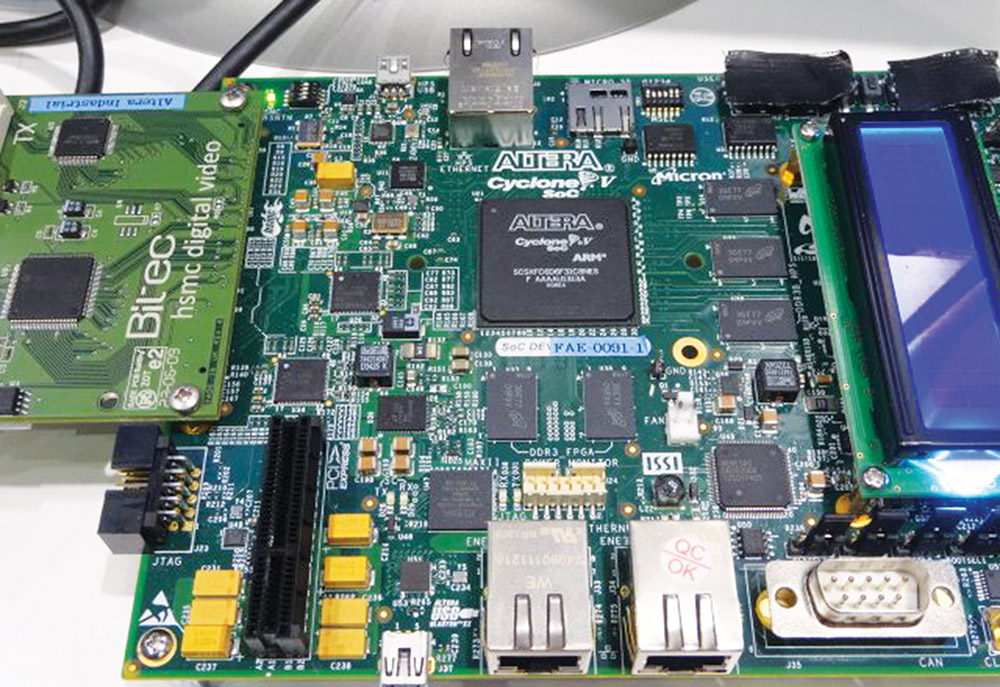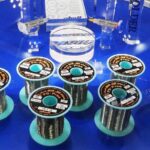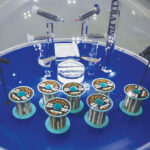ASIA ELECTRONICS INDUSTRYYOUR WINDOW TO SMART MANUFACTURING
Solder Makers Lean Toward Carbon Neutrality
Present trends in the electronics industry, including fifth-generation (5G) communications, electric vehicles (EVs), internet of things (IoT), carbon neutrality, digital transformation (DX), and green transformation (GX), have been pushing up the demand for electric and electronic devices. Against this backdrop, the solder industry has been evolving in various ways. These include the development of products that meet applications and the production of low melting point solders that contribute to carbon neutrality.
Solders are kinds of alloy. They have been widely used as materials for bonding metals. Solders are indispensable in the production of electric and electronic devices. They are used to bond electronic components, semiconductors, and connectors mounted along wiring patterns of electronic circuit boards, also called printed circuit boards (PCBs) or printed wiring boards (PWBs).
In the electronic circuit board manufacturing process called surface mounting technology (SMT), paste-like solder is applied along electronic circuits drawn on copper foils on glass epoxy materials and other substrates, using a solder printing machine. Then, components are mounted using a surface mounter and soldered by using reflow soldering equipment (solder bath).

and industrial applications.
In general, reflow equipment melts solder at a temperature around 250℃. When the temperature falls, the solder hardens, thereby bonding electronic components to electronic circuit boards. In some cases, soldering is performed by using soldering irons and soldering robots.
Bonding Process of Solder
The bonding process in soldering is achieved through “wetting,” “melting,” and “spreading” between the solder and the base material following the removal of the oxide film using flux. The molten solder expands onto the surface of the metal from which the oxide film was removed (wetting), and the metal component of the substrate melts into the solder component (melting). In the process, in which metal component melts, an intermetallic compound is formed from the reciprocal migration of atoms from both the solder material and the substrate (spreading). The intermetallic bonding of solder is achieved through melting and spreading.
Particularly, wettability significantly affects functionality and safety of products. Hence, it is a crucial property of solders. Higher-quality solders, including those for PCBs for EVs, are demanded. Soldering defects cause voids. Hence, development of solder products that suppress voids is of outmost importance.
Alloy Compositions with Multiple Elements
Conventionally, tin (Sn), copper (Cu) and lead (Pb)-based solder alloys were the mainstream. However, silver (Ag) and other elements have replaced Pb, which has adverse effects on the environment.
At present, products with Ag and other elements added to Sn and Cu as base materials have come to be used widely. In year 2000, the Japan Electronics and Information Technology Industries Association (JEITA) recommended Sn-3Ag-0.5Cu (SAC305), which employs Sn and Cu as base materials and includes 3 percent Ag (mass ratio), as an industry standard in Japan. It is also called 3Ag. Since then, SAC305 has been widely adopted in home electric appliances and audio-video (A/V) equipment. Thereafter, however, prices of metal materials fluctuated. Particularly, Ag prices increased severalfold.
As a result, low-Ag solders with Ag content lower than 3 percent and no-Ag solders have increased. Products with different metal composition in accordance with application have also increased. For example, electronic circuit boards used in EVs are required to have high strengths, such as weather resistance and vibration resistance. Meeting these demands, new products with higher bonding strength have emerged by adding indium (In), cobalt (Co), antimony (Sb), and germanium (Ge).
Soaring Raw Materials Prices
Soaring raw materials prices, including the rising non-ferrous metals prices, are nagging the manufacturing industry.
The solder industry is also affected by hikes in prices of Sn, Ag, and Cu, which are the main solder materials. Solder manufacturers are struggling to cope with the situation. International Tin Association (ITA) has announced that the global demand for refined tin in 2022 will drop 0.6 percent from the previous year. Tin prices continued to rise until April 2022. Currently, hikes have eased.

However, the market still has some apprehensions. In Jan. 2022, the price of copper rose to US$10,072 per ton, and has since remained high. At the same time, the shortage of copper material has been continuing. Copper has excellent conductivity. Amid the global trend to propel decarbonization, the proliferation of EVs has advanced. In addition, the introduction of renewable energy contributes to the increase in demand for copper in the medium to long term. Establishment of infrastructure for new energy, such as wind power generation, increases the demand for Cu wires. These contribute as factors to the shortage of Cu.
Aside from Cu, the price of Ni, a solder alloy composition, has also skyrocketed, topping record high.
Low Melting Point Solders
Interests in carbon neutrality has been surely increasing in the SMT industry, and low melting point solders are attracting attention. Solders with low melting points provide favorable effects in various soldering process, including simplification of the mounting process, in addition to energy saving of the solder bath. As a result, low melting point solders lead to carbon neutrality.
In general, melting points of solders, including bismuth (Bi), In, and Cd, drop to lower than 183℃, whereas the melting point of SAC305 is 200℃. However, Sn-Bi-based low-temperature solders generate too much dross when used in the flow soldering process. Dross is an oxidized solder that floats on the surface of solder bath and causes soldering defects in PCBs. Another challenge of Sn-Bi alloys is low ductility. Solder manufacturers have been endeavoring to improve solder materials and processes to overcome these challenges.




